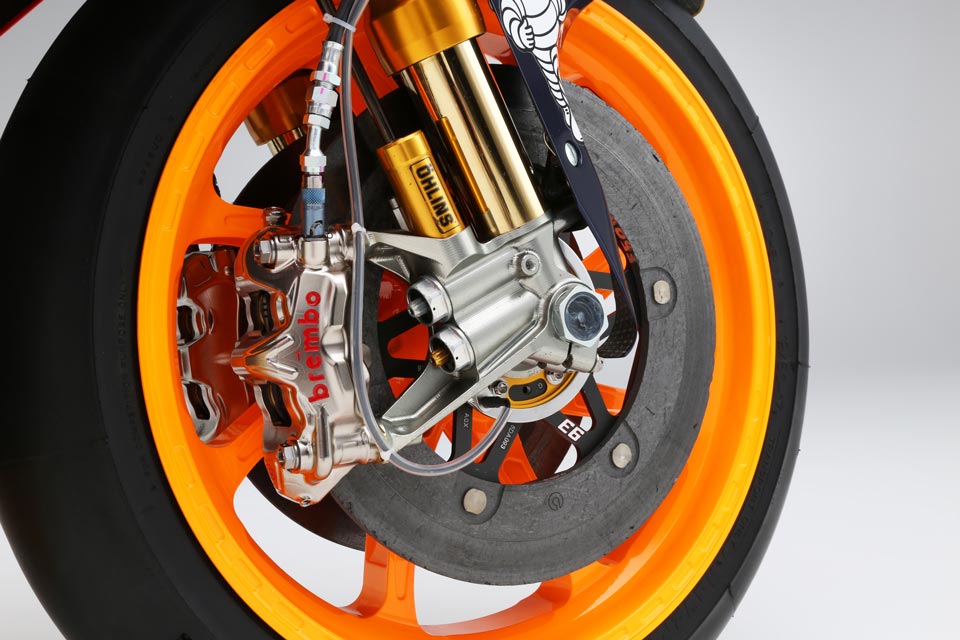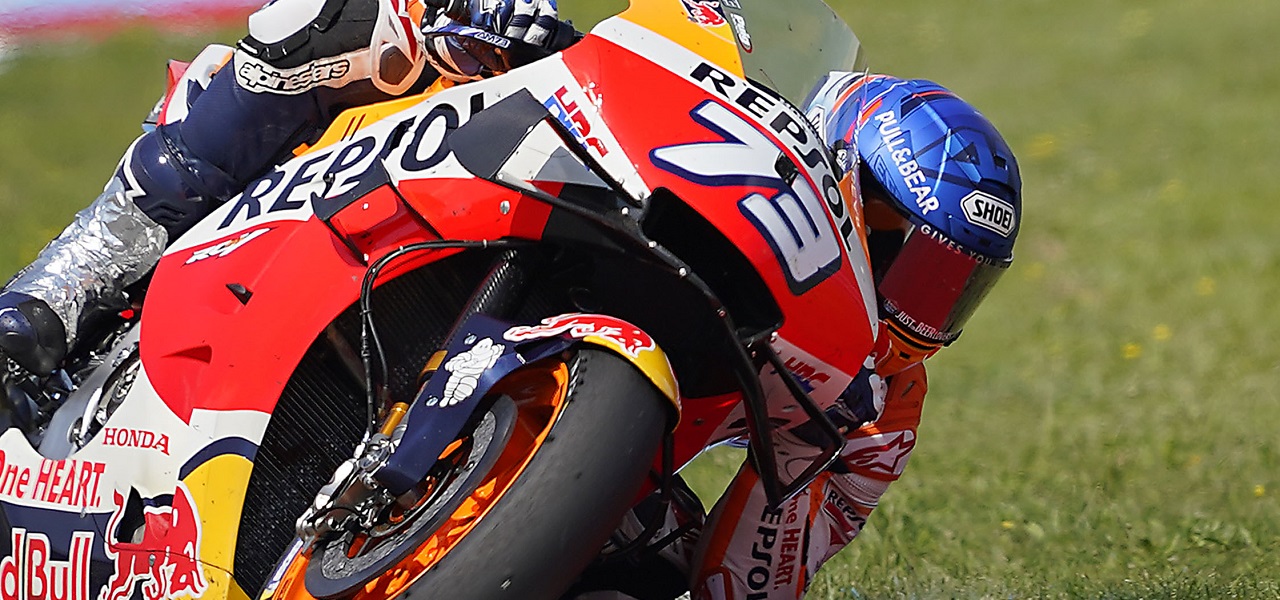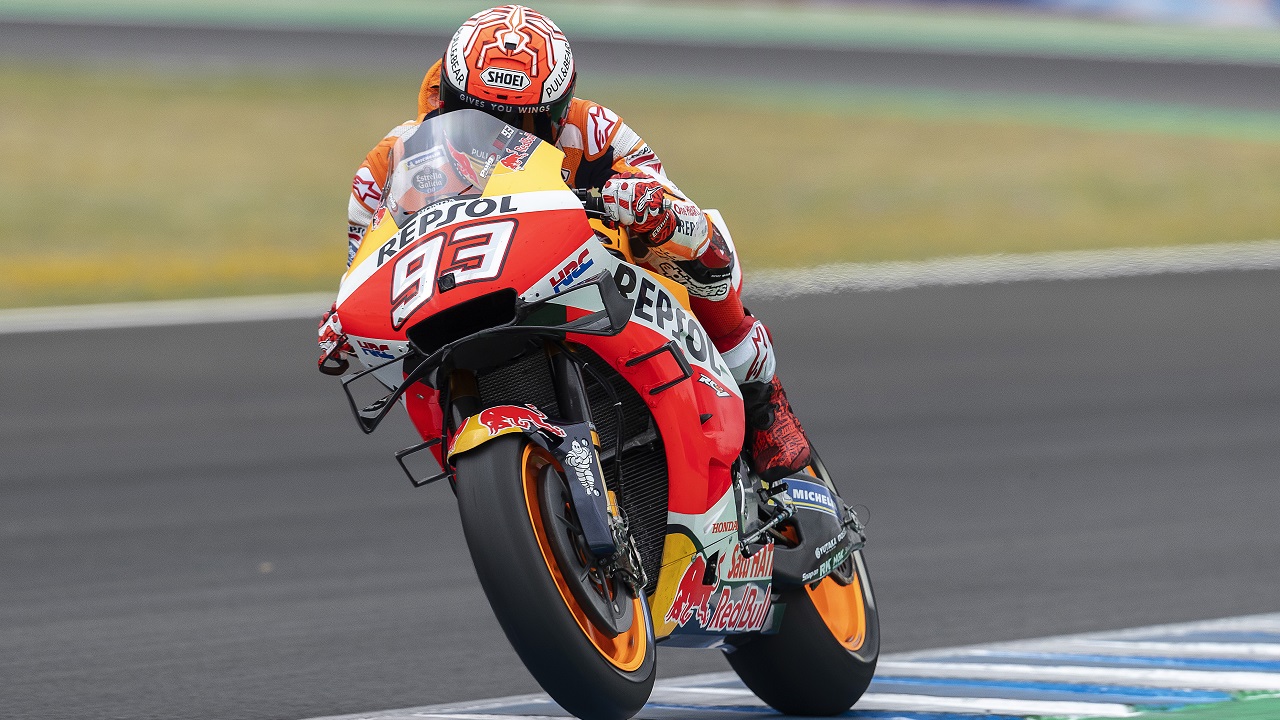As we all know, tyre selection is one of the critical points of a race weekend, and this is something that all teams know very well. Michelin, which until 2023 will remain the sole supplier of tyres for the top class, provides a selection of different compounds. These vary depending on the circuit and the weather conditions that are expected on any given weekend.
A total of 22 tyres are supplied to each rider in each GP. These are separated into 10 front and 12 rear for dry conditions. In addition, within those 22, teams can select tyres of up to three different compounds commonly called soft, medium, and hard.
If a rider participates in both qualifying sessions, an additional set of tyres will be granted, thus exceeding the assigned limit.
If it rains, riders will have a set of 13 specific tyres at their disposal for a wet track. These have three different compounds from which to choose and are separated into six front and seven rear. If at least four of the sessions held between Friday and Saturday are in wet conditions, one more set of tyres will be supplied to all riders.
In addition to all the compounds for GPs, the teams have another 120 tyres available per rider for test sessions.


Asphalt-adapted tyres
The compounds provided are categorized according to their hardness with soft, medium, and hard for dry conditions; and extra soft, soft, and medium tyres for the rain. Of course, we must bear in mind that these compounds of different hardness vary from track to track, and Michelin analyses the data in detail to decide which tyres should be used on that track and in those conditions. This means that a “medium” tyre on one circuit can be considered a “soft” tyre for another that is more aggressive on the tyres.
Michelin provides tyres with an asymmetrical tread pattern for some GPs. Asymmetrical tyres have different compounds on each side of the tyre. This means that, where there are many more curves in one direction than in another, the tyres are prepared for more wear on one side than on the other or that they are easier to warm up on the side that takes sustained curves.
What can we see on a tyre?
On the sides of the tyre we can find more things than just the manufacturer’s name. On the one hand, we have a barcode that tells us which rider it belongs to, as well as the serial number and other internal data that Michelin can use to track each tyre.
We can also see, a coloured stripe. These normally indicate the tyres type of compounds. With dry tyres, we will usually see a white stripe if it is soft, a yellow one if it is hard or no stripe stripe (black) if it is medium. For those for when it rains the colours are light blue for extra soft, dark blue, for soft, and white for medium.


Pressure and temperature sensors
Teams have to use the pressures recommended by Michelin, which is usually around 2 bars in the front and 1.8 bars in the rear. This pressure is achieved by inflating the wheels with dry air, so that it does not rise with increasing temperature.
Incorrect pressure causes the tyre to deform and it makes their ideal temperature more difficult to achieve or even overheat.
Speaking of temperatures, the front end is usually at over 100 °C, and in the case of the rear over 120 °C. In the case of tyres for wet conditions, we are talking about 60 °C and 80 °C respectively.
Michelin stipulates that the tyres must be in their warmers for at least one hour before the motorcycle goes out on the track, even recommending two hours, to reach a temperature of 90 °C for dry conditions and 40 °C for those in the rain.
As with carbon brakes, racing tyres require a high surface temperature to perform correctly, so an incorrect tyre choice could cost a race. And we must not forget that the track conditions and the riding style are also factors.
Michelin technicians are responsible for taking temperature measurements of the track and the tyres in order to have all the necessary data for the best performance on the track. These measurements are taken with a high-precision hand thermometer at three different points, and then calculating the average.


Constant punishment
The tyres, as we mentioned at the start, are the only points of the motorcycle in contact with the track’s surface, and this means that all the forces generated by the engine, the brakes or the movement of the rider are transferred to the track via this minimal contact point.
We are talking about a contact point equivalent to little more than that of a €2 coin. Via this small area, the rider unleashes all the engine’s horsepower and applies the brakes of one of the most advanced motorcycles on the planet. While sustaining these forces, the tyre must also maintain its shape at all times, without deforming.
To get an idea of the forces to which they are subjected, during acceleration along a straight the rear wheel sustains more than 2200 Newtons of force (224 kg), and during a hard brake up to 1.5 G, and the front tyre exceeds 2500 Newtons (254 kg). When turning, the lateral forces exceed 2000 Newtons (203 Kg).
Imagine all the punishment they receive during a race, curve after curve, brake after brake, skidding on a red hot track like Sepang Circuit. It is not easy to manage tyres in such a demanding situation, but that is what separates the good riders from the champions.


 Join Us
Join Us  Join Us
Join Us 




